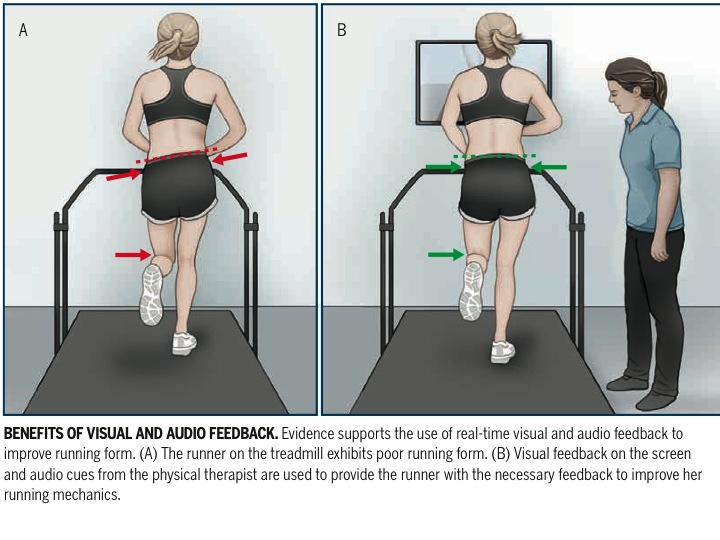In running, performance is easily quantified as the fastest time over a given distance. The runners with the fastest times often have the best ability to utilize oxygen (VO2 max), process metabolites and substances involved in energy utilization (lactate threshold), and the most efficient running form. Efficiency in running is described as running economy, similar to miles per gallon in a car, how much energy is expended to run a given distance and speed. Interestingly, prior research has shown running economy is more predictive of running performance than VO2 max levels (Morgan et al. 1989). As with many physiological variables there is significant variability in economy between runners with similar VO2 max levels. Thus two runners can complete a run of the same distance in the same time, but expend different levels of energy. Imagine an amateur athlete completing a training run with a professional runner. The professional runner will be at a significantly lower intensity than the amateur.
Among most runners an increase of 5-20% in VO2 max is observed with aerobic training, but genetics also limit the maximum level of oxygen utilization during activity. Thus runners trying to improve their running performance should also consider beneficial changes in running economy. Factors influencing running economy can be broken down into two categories, intrinsic factors inherent to the athlete and extrinsic factors such as running surface and shoe wear. A recent review article in the journal Sports Medicine highlighted the evidence behind improving running economy (Moore et al. 2016).
A runner’s optimal stride length is mostly self determined by the athlete and represents a self-selected economical running form. In trained runners stride length is on average 3% greater than optimal, but this percentage can be up to 8% in a novice runner (Ferrauti et al. 2010). Making small changes in stride length can often improve running economy especially in the novice runner.
Another variable highlighted in the article involved improving running biomechanics to improve running economy. Energy wasted in the vertical and rotational planes by the upper or lower body are detrimental to increasing horizontal plane speed and efficiency. For example, the amount of vertical or rotational displacement observed in the running cycle has been shown to adversely effect economy. Surprisingly, time in contact with the ground has been an inconclusive variable to improve economy. Faster stride frequency may reduce injury risk or pain with running, but also impacts energy required during running. A tradeoff is observed between high stride frequency leading to increasing deceleration muscle costs vs. a lower stride frequency leading to increased energy absorption and potential injury risk. Despite a commonly reported statement by tribes of runners there is inconclusive evidence that forefoot vs. rearfoot running is more economical.
A final variable to consider would be the range of motion and muscular effort observed at the lower extremity joints between landing and push off. An athlete will burn more energy per step if their hip, knee, and ankle move through greater ranges of motion compared to a more efficient runner. Thus minimizing unnecessary movements will improve running economy and performance.
The pros and cons of these variables on a runner’s gait must be considered before making any changes. Thus, runners interested in reducing injury risk and improving performance should utilize gait analysis by a Physical Therapist to evaluate their running gait and determine the most appropriate modifiable factors

